
Santa Catalina Island: A Californian Gem
Discover Santa Catalina Island: A unique blend of natural beauty, charming towns, and exciting outdoor activities just off the California coast.
Santa Catalina Island, often referred to simply as Catalina, lies just off the coast of Southern California. This captivating island is part of the Channel Islands and is a favorite spot for both locals and tourists. Known for its clear waters, stunning landscapes, and charming small-town vibe, Catalina offers a unique escape from the hustle and bustle of mainland life. Avalon, the island’s main town, is a picturesque harbor city filled with colorful shops, restaurants, and historic sites. Visitors can explore the Catalina Casino, which is not a gambling hall but a grand ballroom and theater. The Wrigley Memorial and Botanic Garden is another must-see, showcasing endemic plants and offering breathtaking views of the island. Outdoor enthusiasts will find plenty to do, from snorkeling and scuba diving in the crystal-clear waters to hiking the rugged trails of the island’s interior. The Trans-Catalina Trail offers a challenging yet rewarding trek across the island's diverse landscapes. For a more relaxed experience, glass-bottom boat tours and kayaking are popular choices. Catalina’s wildlife is another highlight. The island is home to a variety of species, including the Catalina Island fox and the American bison, which were introduced to the island in the 1920s. These animals can often be seen roaming the island’s protected areas. Whether you’re seeking adventure, relaxation, or a bit of both, Santa Catalina Island provides an idyllic setting for an unforgettable getaway.
Local tips in Santa Catalina Island
- Ferry schedules can vary, so book your tickets in advance and check for any changes before your trip.
- Consider renting a golf cart to explore Avalon at your own pace; it's the main mode of transport on the island.
- Pack layers, as weather can change quickly, especially if you plan to hike or explore the interior of the island.
- Visit the Catalina Island Conservancy for guided eco tours and to learn more about the island’s unique ecosystem.
- Try local seafood dishes at Avalon's waterfront restaurants for a true taste of island cuisine.
Santa Catalina Island: A Californian Gem
Santa Catalina Island, often referred to simply as Catalina, lies just off the coast of Southern California. This captivating island is part of the Channel Islands and is a favorite spot for both locals and tourists. Known for its clear waters, stunning landscapes, and charming small-town vibe, Catalina offers a unique escape from the hustle and bustle of mainland life. Avalon, the island’s main town, is a picturesque harbor city filled with colorful shops, restaurants, and historic sites. Visitors can explore the Catalina Casino, which is not a gambling hall but a grand ballroom and theater. The Wrigley Memorial and Botanic Garden is another must-see, showcasing endemic plants and offering breathtaking views of the island. Outdoor enthusiasts will find plenty to do, from snorkeling and scuba diving in the crystal-clear waters to hiking the rugged trails of the island’s interior. The Trans-Catalina Trail offers a challenging yet rewarding trek across the island's diverse landscapes. For a more relaxed experience, glass-bottom boat tours and kayaking are popular choices. Catalina’s wildlife is another highlight. The island is home to a variety of species, including the Catalina Island fox and the American bison, which were introduced to the island in the 1920s. These animals can often be seen roaming the island’s protected areas. Whether you’re seeking adventure, relaxation, or a bit of both, Santa Catalina Island provides an idyllic setting for an unforgettable getaway.
When is the best time to go to Santa Catalina Island?
Unmissable attractions to see
Catalina Casino
Explore the Catalina Casino, a stunning blend of history and culture in Avalon, California, renowned for its iconic architecture and entertainment.
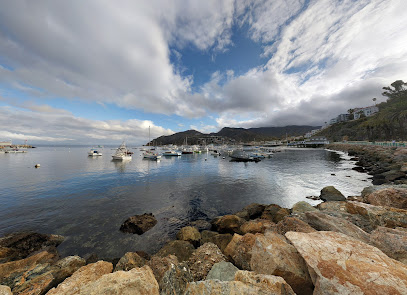
Wrigley Memorial
Explore the historical significance and natural beauty of Wrigley Memorial and Botanic Garden in Avalon, California, a serene retreat for all travelers.

Catalina Museum For Art & History
Explore the vibrant culture and rich history of Catalina Island at the Catalina Museum for Art & History, a must-visit for art and history enthusiasts.
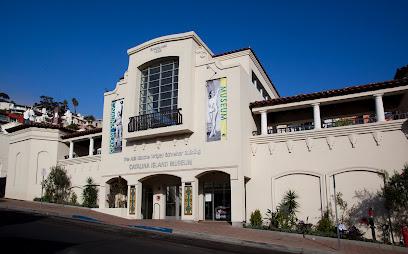
Catalina Museum For Art & History
Explore the vibrant history and art of Catalina Island at the Catalina Museum for Art & History, a cultural treasure in Avalon.

Wrigley Memorial and Botanic Garden
Explore the tranquil Wrigley Memorial and Botanic Garden on Catalina Island, where nature meets history in a stunning floral oasis.

Catalina Island Conservancy Trailhead
Explore the breathtaking trails and unique ecosystems at Catalina Island Conservancy Trailhead, your gateway to adventure on Catalina Island.

Catalina Island Visitor Center
Explore Catalina Island from the heart of Avalon at the Visitor Center, your essential resource for adventure, culture, and unforgettable experiences.

3 Palms Scenic Overlook
Discover the stunning beauty of Avalon at the 3 Palms Scenic Overlook, where breathtaking views meet serene tranquility.

Wrigley Stage Avalon Bay Vista
Discover the breathtaking views at Wrigley Stage Avalon Bay Vista, a scenic highlight in Avalon, California, perfect for relaxation and memorable photography.

Eco-Tours Catalina Island Conservancy
Explore the natural wonders of Catalina Island at the Catalina Island Conservancy, where eco-tours meet breathtaking landscapes and diverse wildlife.

Huntington Beach International Surfing Museum
Explore the rich history of surfing at the Huntington Beach International Surfing Museum, where California's surf culture comes alive in a vibrant setting.
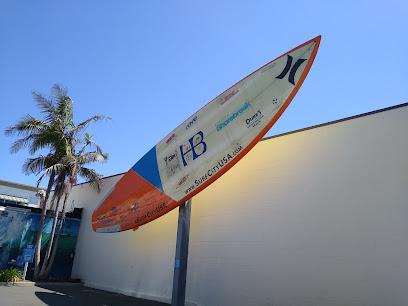
Harbor Sands
Experience the beauty of Harbor Sands, Avalon's pristine public beach, where relaxation meets adventure in a stunning coastal setting.

Haunted Catalina Ghost Tour
Discover the chilling legends and ghostly tales of Catalina Island on the Haunted Catalina Ghost Tour in Avalon, California.
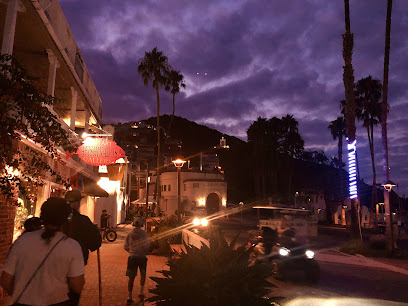
Parsons Landing
Experience the tranquility of Parsons Landing on Catalina Island, a perfect campground for nature lovers and adventure seekers alike.

Catalina Chimes Tower
Experience the charm and history of Catalina Island at the iconic Catalina Chimes Tower, a must-visit landmark with stunning views and melodic chimes.

Essential places to dine
Bluewater Avalon
Experience the freshest seafood with breathtaking ocean views at Bluewater Avalon on Catalina Island.

The Lobster Trap
Discover fresh seafood delights at The Lobster Trap in Avalon – where taste meets oceanic charm.

Original Jack's Country Kitchen
Experience the heartwarming flavors of Avalon at Original Jack's Country Kitchen – where every meal feels like home.

Pancake Cottage
Discover Avalon's Pancake Cottage - where every breakfast is a delicious adventure filled with fluffy pancakes and hearty meals.

Luau Larry's
Experience the vibrant flavors of island life at Luau Larry's in Avalon – where every meal feels like a tropical getaway!

The Sandtrap
Discover the flavors of Mexico and America at The Sandtrap in Avalon – your go-to destination for delicious breakfasts and casual dining.

Mi Casita
Experience the vibrant flavors of Mexico at Mi Casita in Avalon - where every dish tells a story.

Buffalo Nickel Inc
Discover culinary delights at Buffalo Nickel Inc in Avalon – where fresh flavors meet coastal charm for an unforgettable dining experience.

Avalon Grille
Experience fine dining at Avalon Grille on Catalina Island with stunning ocean views and exquisite cuisine.

Maggie's Blue Rose Mexican
Experience authentic Mexican cuisine at Maggie's Blue Rose in Avalon – where every bite tells a story of tradition and flavor.

Coyote Joe's Bar & Restaurant
Experience authentic Mexican flavors at Coyote Joe's Bar & Restaurant while enjoying breathtaking ocean views in Avalon.
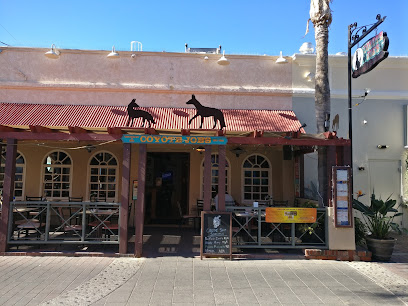
El Galleon
Discover El Galleon in Avalon: A lively American restaurant offering delicious seafood, steakhouse favorites & karaoke nights on beautiful Catalina Island.

NDMK Fish House
Experience the best seafood at NDMK Fish House in Avalon—fresh flavors, stunning views, and unforgettable dining await.

Harbor Reef Restaurant & Bar
Experience coastal dining like never before at Harbor Reef Restaurant & Bar in Two Harbors - savor fresh seafood with stunning ocean views.
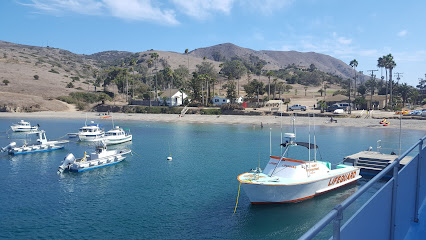
Steve's Steakhouse and Seafood
Experience exquisite dining at Steve's Steakhouse and Seafood in Avalon – where prime steaks meet fresh seafood in an elegant setting.
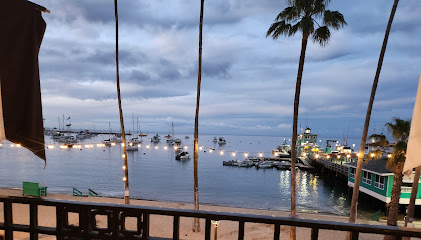
Markets, malls and hidden boutiques
Santa Catalina Island
Experience the breathtaking beauty and serene charm of Santa Catalina Island, a perfect getaway for nature lovers and adventure seekers alike.

Catalina Coffee & Cookie Co
Experience the warmth of Catalina Coffee & Cookie Co – a perfect blend of cookies, coffee, and cozy vibes in Avalon, California.

Catalina Divers Supply
Explore the underwater wonders of Avalon, California with Catalina Divers Supply, your premier SCUBA tour agency and dive shop.
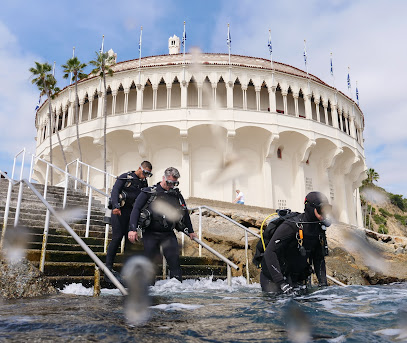
Lloyd's of Avalon
Experience the sweet charm of Lloyd's of Avalon, your go-to candy store and gift shop in beautiful Avalon, California.

Metropole Market Place
Experience the vibrant shopping and dining at Metropole Market Place in Avalon, California - a unique destination for tourists seeking local charm.

Island Threadz
Discover unique souvenirs and clothing at Island Threadz in Avalon, California - your go-to gift shop for personalized treasures.

Buoys & Gulls
Discover stylish apparel and unique souvenirs at Buoys & Gulls in Avalon, the perfect clothing store for every traveler on Catalina Island.

The Steamer Trunk
Discover unique gifts and coastal treasures at The Steamer Trunk in Avalon, California, perfect for capturing the spirit of your seaside adventure.

Two Harbors General Store
Experience the heart of Catalina Island at Two Harbors General Store, your go-to spot for groceries, supplies, and unique souvenirs.

Bay of Seven Moons
Explore the Bay of Seven Moons, Avalon’s premier gift shop offering unique souvenirs and local artisan crafts that capture the spirit of Catalina Island.
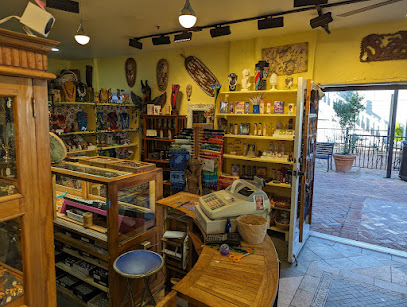
Latitude 33
Discover unique styles and local fashion at Latitude 33, the ultimate clothing store in Avalon, California.

Shades of Catalina
Explore the vibrant Shades of Catalina, where sunglasses meet sweets and souvenirs in the heart of Avalon, California.
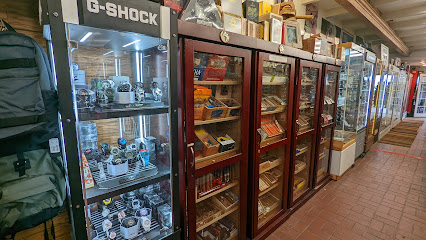
Yoshi's
Discover unique souvenirs and local treasures at Yoshi's, the premier gift shop in Avalon, California, nestled along the beautiful Green Pleasure Pier.

Catalina Seashell Co.
Explore Catalina Seashell Co. in Avalon for unique ocean-themed gifts and treasures that embody the spirit of the island.

Csc Boardshop
Explore Csc Boardshop in Avalon, CA for the finest surf and skate gear, embodying the spirit of California's coastal lifestyle.
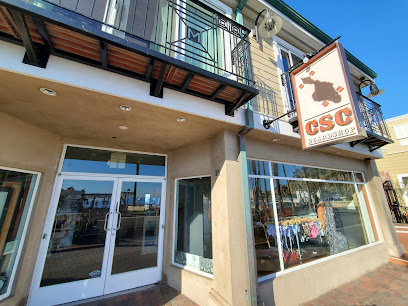
Essential bars & hidden hideouts
Bluewater Avalon
Experience the best of Avalon’s seafood at Bluewater Avalon, where fresh catches meet stunning ocean views in a vibrant dining atmosphere.

The Lobster Trap
Experience the best of Catalina Island's seafood at The Lobster Trap, where fresh flavors and a charming atmosphere await you.

Descanso Beach Club
Discover Descanso Beach Club, a stunning coastal retreat in Avalon, offering delectable cuisine, refreshing cocktails, and endless ocean adventures.

Pancake Cottage
Discover Pancake Cottage in Avalon, where breakfast dreams come true with fluffy pancakes and a cozy ambiance.

Luau Larry's
Experience the vibrant flavors of Luau Larry's in Avalon, where delicious grilled dishes meet a lively beachfront atmosphere.

The Sandtrap
Experience the vibrant flavors of Mexican and American cuisine at The Sandtrap, a cherished dining spot in Avalon that delights every palate.

Buffalo Nickel Inc
Experience the coastal charm of Avalon at Buffalo Nickel Inc, where delicious meals and stunning views come together in a vibrant dining atmosphere.

Avalon Grille
Experience the finest culinary delights at Avalon Grille, where breathtaking ocean views meet exquisite dining on Catalina Island.

Maggie's Blue Rose Mexican
Experience the vibrant flavors of Mexico at Maggie's Blue Rose, Avalon’s beloved Mexican restaurant known for its delicious food and festive atmosphere.

Coyote Joe's Bar & Restaurant
Experience the vibrant atmosphere and authentic Mexican cuisine at Coyote Joe's Bar & Restaurant in Avalon, California.

El Galleon
Experience the best of American cuisine with a lively twist at El Galleon in Avalon, where delicious seafood and karaoke nights await.

Harbor Reef Restaurant & Bar
Discover the flavors of Catalina Island at Harbor Reef Restaurant & Bar in Two Harbors, offering fresh seafood and stunning waterfront views.

Steve's Steakhouse and Seafood
Experience the best of Avalon dining with exquisite steaks and fresh seafood at Steve's Steakhouse and Seafood along the stunning California coast.

Catalina Cantina Jr.
Discover the vibrant Mexican flavors at Catalina Cantina Jr. in Avalon, where every meal is a celebration of taste and culture.

Catalina Island Brew House
Discover the flavors of Catalina Island at Catalina Island Brew House, your go-to brewpub for craft beers, artisanal pizzas, and a relaxing atmosphere.

Local Phrases about Santa Catalina Island
-
- HelloHola
[oh-lah] - GoodbyeAdiós
[ah-dee-ohs] - YesSí
[see] - NoNo
[no] - Please/You're welcomePor favor/De nada
[por fah-vor/deh nah-dah] - Thank youGracias
[grah-see-ahs] - Excuse me/SorryPerdón/Lo siento
[pair-dohn/loh see-en-toh] - How are you?¿Cómo estás?
[koh-moh ehs-tahs] - Fine. And you?Bien. ¿Y tú?
[bee-ehn. ee too] - Do you speak English?¿Hablas inglés?
[ah-blahs een-glays] - I don't understandNo entiendo
[noh ehn-tee-ehn-doh]
- HelloHola
-
- I'd like to see the menu, pleaseMe gustaría ver el menú, por favor
[meh goo-stah-ree-ah behr ehl meh-noo, poor fah-vor] - I don't eat meatNo como carne
[noh koh-moh kahr-neh] - Cheers!¡Salud!
[sah-lood] - I would like to pay, pleaseMe gustaría pagar, por favor
[meh goo-stah-ree-ah pah-gahr, poor fah-vor]
- I'd like to see the menu, pleaseMe gustaría ver el menú, por favor
-
- Help!¡Ayuda!
[ah-yoo-dah] - Go away!¡Vete!
[veh-teh] - Call the Police!¡Llama a la policía!
[yah-mah ah lah poh-lee-see-ah] - Call a doctor!¡Llama a un médico!
[yah-mah ah oon meh-dee-koh] - I'm lostEstoy perdido
[ehs-toy pair-dee-doh] - I'm illEstoy enfermo
[ehs-toy ehn-fehr-moh]
- Help!¡Ayuda!
-
- I'd like to buy...Me gustaría comprar...
[meh goo-stah-ree-ah kohm-prahr...] - I'm just lookingSólo estoy mirando
[soh-loh ehs-toy mee-rahn-doh] - How much is it?¿Cuánto cuesta?
[kwan-toh kwehs-tah] - That's too expensiveEso es muy caro
[eh-soh ehs moo-ee kah-roh] - Can you lower the price?¿Puede bajar el precio?
[pweh-deh bah-har ehl pree-syoh]
- I'd like to buy...Me gustaría comprar...
-
- What time is it?¿Qué hora es?
[keh oh-rah ehs] - It's one o'clockEs la una en punto
[ehs lah oo-nah ehn poon-toh] - Half past (10)Son las diez y media
[sohn lahs dyehs ee meh-dee-ah] - MorningMañana
[mah-nyah-nah] - AfternoonTarde
[tahr-deh] - EveningNoche
[noh-cheh] - YesterdayAyer
[ah-yehr] - TodayHoy
[oy] - TomorrowMañana
[mah-nyah-nah] - 1Uno
[oo-noh] - 2Dos
[dohs] - 3Tres
[trehs] - 4Cuatro
[kwa-troh] - 5Cinco
[seen-koh] - 6Seis
[says] - 7Siete
[syeh-teh] - 8Ocho
[oh-choh] - 9Nueve
[nweh-veh] - 10Diez
[dyehs]
- What time is it?¿Qué hora es?
-
- Where's a/the...?¿Dónde está...?
[dohn-deh ehs-tah] - What's the address?¿Cuál es la dirección?
[kwal ehs lah dee-rehk-syon] - Can you show me (on the map)?¿Puedes mostrarme (en el mapa)?
[pweh-dehs mohs-trar-meh (ehn ehl mah-pah)] - When's the next (bus)?¿Cuándo es el próximo (autobús)?
[kwan-doh ehs ehl prohk-see-moh (ow-toh-boos)] - A ticket (to ....)Un boleto (a ....)
[oon boh-leh-toh (ah ....)]
- Where's a/the...?¿Dónde está...?
History of Santa Catalina Island
-
Before European contact, Santa Catalina Island was home to the Tongva people, who referred to the island as 'Pimu' or 'Pimu'nga.' The Tongva lived in large villages and engaged in fishing, trade, and the crafting of intricate tools and goods. Archeological evidence indicates that the island was inhabited for at least 7,000 years before Spanish explorers arrived.
-
In 1542, the Portuguese explorer Juan Rodríguez Cabrillo, sailing under the Spanish flag, became the first European to set foot on Santa Catalina Island. He named it 'San Salvador' after his ship. Later, in 1602, Spanish explorer Sebastián Vizcaíno arrived and renamed it 'Santa Catalina' in honor of Saint Catherine. The island was used intermittently by Spanish missionaries and settlers, though it never became a permanent mission site.
-
During the 19th century, Santa Catalina Island became a haven for pirates, smugglers, and otter hunters. The island's remote coves and hidden bays provided ample cover for illicit activities. Notable figures such as the pirate Hippolyte de Bouchard used the island as a base for operations, adding a layer of intrigue to its history.
-
The California Gold Rush of 1848 brought new attention to Santa Catalina Island. By the mid-19th century, the island was used for ranching, with sheep and cattle grazing its hills. James Lick, a wealthy landowner, purchased the island in 1864 but faced challenges in developing it due to its isolated location and lack of fresh water.
-
In 1891, the Banning brothers—William, Joseph, and Hancock—purchased Santa Catalina Island with the vision of transforming it into a tourist destination. They built infrastructure including hotels, a dance pavilion, and the iconic Catalina Casino. Unfortunately, a massive fire in 1915 destroyed much of their development, but their efforts laid the groundwork for future tourism.
-
In 1919, William Wrigley Jr., the chewing gum magnate, purchased Santa Catalina Island. He invested heavily in its development, building the iconic Catalina Casino in 1929, enhancing transportation, and promoting tourism. Under Wrigley's ownership, the island became a popular retreat for Hollywood celebrities and the general public alike.
-
During World War II, the U.S. military took control of Santa Catalina Island, using it for training exercises and as a coastal defense station. The island's strategic location made it an ideal spot for anti-aircraft training and other military activities. Post-war, the island was returned to civilian use and resumed its role as a tourist destination.
-
In 1975, the Catalina Island Conservancy was established to protect and restore the island's natural environment. Today, more than 88% of the island is managed by the Conservancy, ensuring the preservation of its unique flora and fauna. Modern Catalina Island is a blend of historical charm and natural beauty, attracting visitors from around the world to its pristine beaches, hiking trails, and cultural sites.
Santa Catalina Island Essentials
-
Santa Catalina Island is accessible by ferry, helicopter, or private boat. The most common way to get to the island is by ferry, with regular services departing from Long Beach, San Pedro, Dana Point, and Newport Beach. The ferry ride takes about an hour. Helicopter services are available from Long Beach, San Pedro, and Orange County, offering a faster but more expensive option. Private boats can dock at the island's harbors, with mooring fees applicable.
-
Once on Santa Catalina Island, transportation options include golf carts, bicycles, taxis, and the Catalina Island Trolley. Golf carts are a popular mode of transport for tourists and can be rented by the hour. Bicycles offer a more eco-friendly way to explore the island. Taxis are available for point-to-point travel, and the Catalina Island Trolley operates on a fixed route, covering key points of interest in Avalon. Walking is also a viable option within Avalon due to its compact size.
-
The official currency on Santa Catalina Island is the U.S. Dollar (USD). Credit and debit cards are widely accepted in hotels, restaurants, and shops. ATMs are available in Avalon and Two Harbors, but it's advisable to carry some cash, especially when visiting more remote areas. Some small vendors and local artisans may prefer cash payments.
-
Santa Catalina Island is generally a safe destination for tourists. However, it's important to stay vigilant and practice standard safety precautions. Avoid walking alone at night in unfamiliar areas and keep an eye on your belongings in crowded places. There are no specific high-crime areas targeting tourists, but petty theft can occur. Always secure your valuables and be aware of your surroundings.
-
In case of emergency, dial 911 for immediate assistance. The island has a local Sheriff's Station and medical facilities, including the Catalina Island Medical Center in Avalon. It is recommended to have travel insurance that covers medical emergencies. For minor health issues, there are pharmacies in Avalon where you can purchase over-the-counter medications.
-
Fashion: Do wear comfortable and casual clothing suitable for a beach destination. Don't wear overly revealing swimwear away from the beach. Religion: Do respect the local customs and traditions, although the island is not particularly religious. Public Transport: Do be courteous to other passengers on the Catalina Island Trolley. Don't eat or drink on public transport. Greetings: Do greet people with a friendly 'Hello' or 'Hi.' A handshake is also acceptable. Eating & Drinking: Do try local seafood and island specialties. Don't litter; always dispose of your trash properly to keep the island clean.
-
To experience Santa Catalina Island like a local, visit the local farmers' market in Avalon for fresh produce and unique island-made products. Engage with the locals, who are often friendly and willing to share stories about the island's history and culture. Don't miss out on the island's outdoor activities, such as snorkeling, hiking, and kayaking, to fully appreciate its natural beauty. For a unique experience, take a tour of the Catalina Casino, which offers a glimpse into the island's glamorous past.
Nearby Cities to Santa Catalina Island
-
Things To Do in Huntington Beach
-
Things To Do in Costa Mesa
-
Things To Do in Laguna Beach
-
Things To Do in Irvine
-
Things To Do in Inglewood
-
Things To Do in Venice Beach
-
Things To Do in Anaheim
-
Things To Do in Santa Monica
-
Things To Do in Los Angeles
-
Things To Do in Malibu
-
Things To Do in Hollywood
-
Things To Do in Monterey Park
-
Things To Do in Glendale
-
Things To Do in Pasadena
-
Things To Do in Burbank













